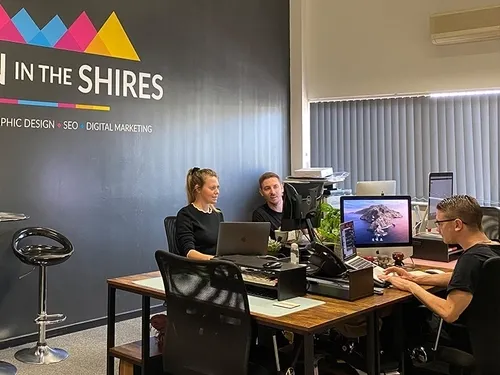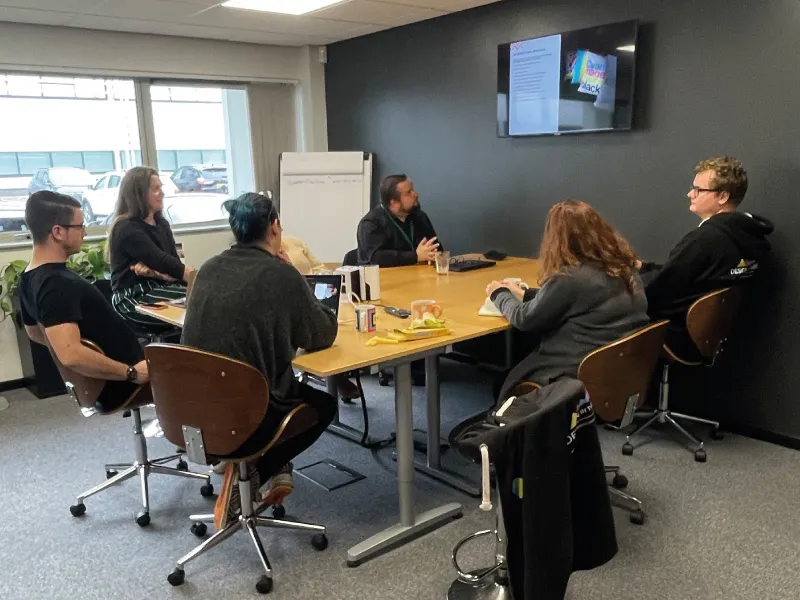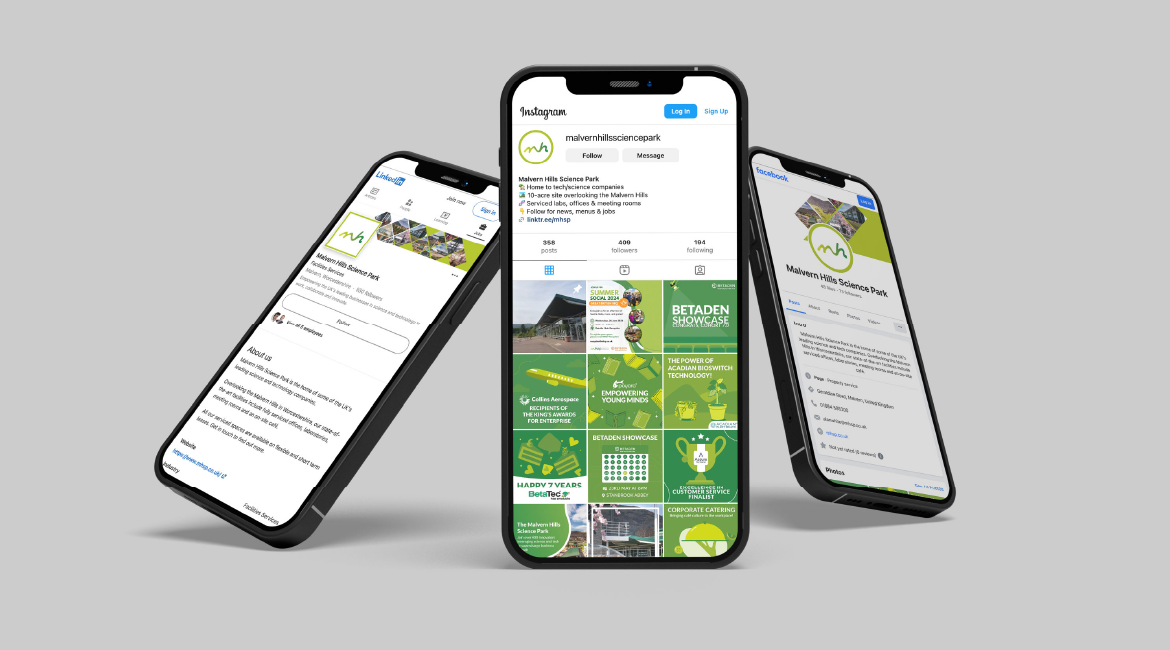How web design impacts content marketing

How web design impacts content marketing
November 2, 2021
6 Mins
Web design and content marketing must show consolidation and cohesion to maintain brand continuity. Combining strong web design consistency with quality content is key to unlock the door of your user’s attention.
Everyone knows that first impressions matter, especially when it comes to web design and content marketing.
With it taking as little as 50 milliseconds for a user to make an opinion about a website, the way the website and content are structured, viewed and designed are imperative to striking online gold.
Getting this right all starts with the website design. If you miss the mark, you could find potential prospects skimming past vital copy and undoing all your content marketing. Not ideal.
In this blog, we explain how web design impacts content marketing and share some proactive ways to find success.
What is content marketing?
First things first, what is content marketing? In essence, content marketing is a type of marketing based on creating and distributing content for an online audience.
The idea of developing a content marketing strategy is to attract new prospects, raise brand awareness, engage users and retain existing ones by positioning a brand as a thought leader.
Unlike traditional marketing, content marketing is used to promote the brand indirectly. It’s not disruptive. Instead, it keeps your brand top of mind, ready for when your target audience is ready to buy.
Prime examples of content marketing include blogs, articles, social media posts, podcasts and videos.
How web design impacts content marketing
Now you have a better idea of what content marketing is and why it’s important, it’s time to discuss the impact your web design could be having on it.
Presentation
As mentioned earlier, first impressions are so crucial, and this all starts with appearance. A website must look right from the get-go to keep your user engaged. Creating a modern and appealing web design will ensure you stay ahead of the curve and relevant.
Once you’ve made a strong first impression, your web design needs to match your brand identity for a cohesive feel across all comms.
If your website design doesn’t reflect your brand colours, mission, vision and statement, your brand will look inconsistent. In content marketing, this could be the difference between someone listening to your podcast or trusting your thought-leadership blog content as a credible source.
Availability
The relationship between your web design and the content on the website is imperative to the user experience (UX). It’s no-good having your user sift through a load of text trying to find the answer they are looking for. The content needs to be accessible and digestible. To achieve this, your web design needs to have a simple structure with ample call to action buttons and easy navigation.
If your website is content-heavy, don’t compromise the UX. The website must be designed with your user in mind. For example, including dropdown menus and ‘read more’ icons are innovative ways to present content. The key is to keep it clear and simple.
Another way to help make a web design feel more accessible is the appropriate application of space. White space also referred to as “negative space” is the portion of the page that is left unmarked. This feature creates balance to the overall appearance, accessibility, and coherency of a web design. It is much more than mere blank space.
A great example of a web design with accessible content, clearly and concisely laid out is D. Morris Design.
Coherency
You might think you have the best content on your website, but it needs to make sense and be easy to read/comprehend. Simplicity is key to all good content. Anyone can make something complicated. It’s all about reaching as many people as possible and this comes through concise, coherent, and clear communication. Don’t try and be too clever or think everyone wants to know every detail all at once.
Many people happen to be visual learners or just prefer hearing something to having to read. It might go a long way to keep this in mind when you are developing your website. Including a video with commentary can satisfy your non-readers and massively improve your overall UX. Remember, it’s all about making it as easy as possible for the visitor. Be concise, coherent, and clear to create complete clarity for your user.
To support your content marketing strategy, include eye-catching forms and blocks to encourage users to consume your different content marketing forms.
Readability
Don’t underestimate the importance of the structure, style, and layout of the text. One clumpy blog with a lack of imagery, infographics and structure can send bounce rates through the roof.
Avoid using too many different fonts as this can decrease the consistency of the brand and confuse the reader. Choose the right font that aligns with your branding or logo and keep it readable. Paragraphs should be capped at three lines to cater for mobile users and short attention spans.
There needs to be cohesion between all elements of web design, branding, and content marketing. It needs to look, read, and communicate as an established brand should.
“Success is neither magical nor mysterious. Success is the natural consequence of consistently applying basic fundamentals.”
Jim Rohn
What is content design?
An essential part of developing an effective web design that supports your content marketing strategy is the design process.
Content design is a term used to describe the relationship between content and how it is presented. The design of content existed way before digital screens with printed works and has a long history with varying definitions.
Now, all aspects of the presentation, appearance, or layout relating to content design are known formally as content patterns.
Although this basic concept sounds simple from the outset, it goes much deeper than people would think. There is a secondary definition of content design that takes a deeper psychological route. This definition of content design is looking deeper into the characteristics of consumers. This creates an avenue for designing content to support the user's needs specifically.
This next branch becomes known as comprehensive content design. Comprehensive content design investigates the behaviour of the consumer concerning the context of the content. Content is then evaluated and positioned precisely to gain constant interaction.
Content design isn’t just a case of wording and layout. It takes on a deeper meaning calling upon content creators and designers to understand their audience and provide quality, well-designed content.
The relationship with your web design and content needs to be stable, streamlined, and seamless. This might depend on the working relationship between who designs the website and who produces the content.
Knowing how content influences design and vice versa ensures the web design and content marketing remains fluid, professional, and consistent across the board. It also drives better results.
At the end of the day, if you want your content marketing strategy to generate sustainable results and your brand to develop a credible reputation online, you must marry content and design.
Bring web design and content marketing together
To successfully implement this content design approach, you need to invest in an expert digital marketing and web design agency.
At Design in the Shires, our copywriter and web designers have a track record in developing high-quality designs that fuel results and enhance reputations.
If you need any support with connecting your web design and content marketing strategies, give our team a call today.























